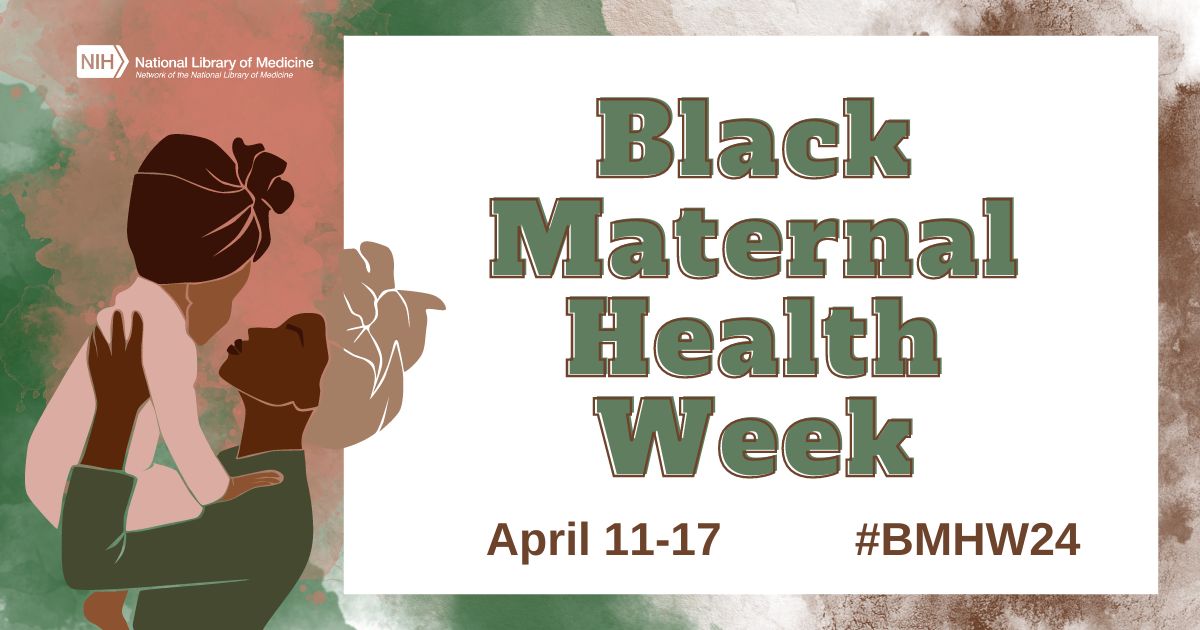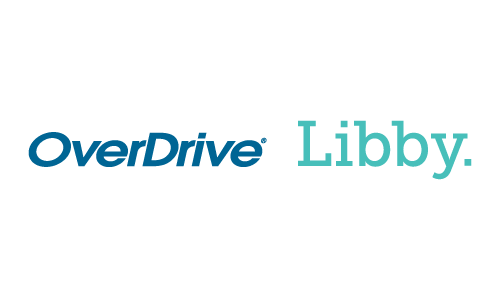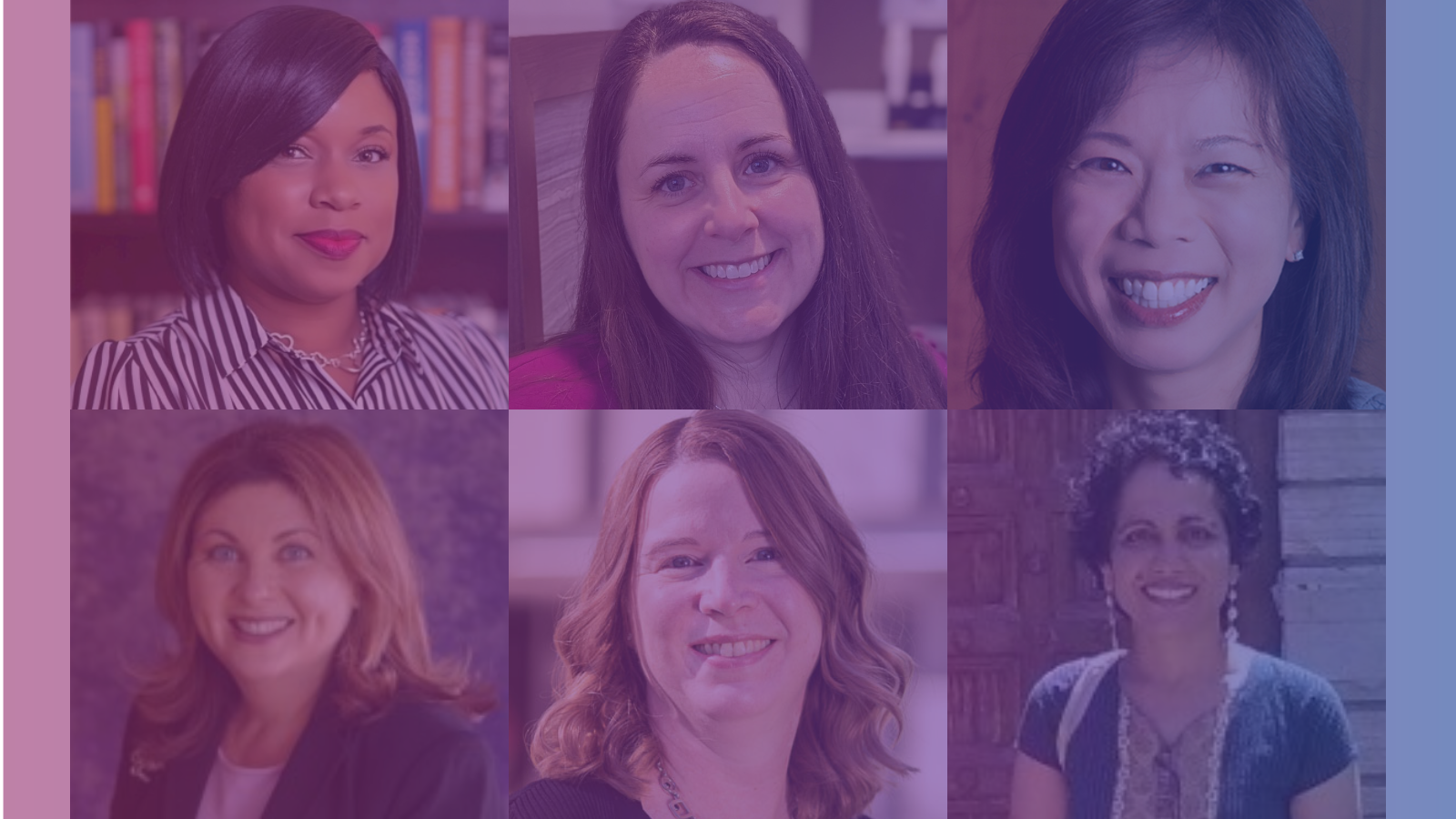Reflections on Gender Oppression and Libraries

SARAH LAWTON has worked in libraries in Colorado, Vermont and Wisconsin. She currently serves as co-lead of the Government Alliance on Race & Equity Libraries Interest Group. Contact Sarah at lawtonlibrarian@gmail.com. Sarah is currently reading Infamous Mothers: Women Who’ve Been Through the Belly of Hell . . . and Brought Something Good Back by Sagashus T. Levingston.
During the past year, the public discourse on sexual harassment and gender-based abuse of power has shifted. Women’s marches, the social media #MeToo movement, and the public condemnation of high-profile individuals accused of sexual misconduct have disrupted the nation’s previously accepted complacency and led to demands for accountability. While the national focus on sexual harassment represents an elevated platform and increased visibility for (primarily white) women speaking out against gender oppression, it has yet to translate into a mass movement for pay equity, improved workplace conditions, increased access to childcare, reproductive freedom, and an end to violence against and exploitation of women. This is a case where the individual actions are receiving a lot of attention, but we are in danger of missing the deeper institutional and structural drivers of persistent and entrenched gender inequity.
At several points in the flurry of accusations, denials, resignations, and backlash against women speaking out against men who abuse their positions of power in male-dominated fields (media, government, banking, entertainment), I have reflected on how gender dynamics play out within female-dominated professions like librarianship, which has long been viewed as women’s work but within which men, perhaps disproportionately, occupy positions of authority.
As a female supervisor in public libraries, I have sometimes struggled to provide adequate support to frontline library workers dealing with inappropriate behavior from patrons. I have attempted to assert my authority without coming across as aggressive or domineering. At times, I have felt it necessary to mask my compassion or enthusiasm in order to conform to expectations of professionalism that feel rooted in patriarchal values. I have often felt that nagging feeling I believe many professional women experience (and which I am keenly aware of as I write this) of being an imposter, as somehow less qualified than my list of personal and professional accomplishments would indicate. I believe that my experience is not unique. For many women of color, LGBTQ people, immigrants, and others, navigating this minefield of gender and power is more treacherous.
We have learned from the movement to advance racial equity that focusing solely on the actions of individuals denies the reality that the inequity we see represents the natural outcome of a power structure that benefits specific groups, at the expense of others. While we must hold individuals accountable for abuses of power and crimes of hate, we must also look more deeply. It is a tempting oversimplification to divide the world into opposing camps; the misogynists vs. the feminists; the racists vs. the inclusive; the knowledgeable vs. the ignorant; the oppressor vs. the oppressed. Focusing solely on individual abuses of power and dividing people into oppositional categories doesn’t bring us closer to addressing the roots of social oppression, which has been described as “the vast and deep injustices some groups su er as a consequence of the often unconscious assumptions and reactions of well-meaning people in ordinary interactions, media and cultural stereotypes, and structural features of bureaucratic hierarchies and market mechanisms—in short, the normal processes of everyday life.”1
We all occupy complex identities with shifting degrees of privilege. In our society, power flows through channels defined by structural racism and misogyny. How can we change these vectors of power and influence—the institutions, policies, social norms and conventions that define our daily lives? The solutions to these problems are not one-size-fits-all. As community-based public institutions, libraries have a role to play in addressing oppression within our profession and in the broader community.
As librarians, we celebrate ideals of diversity and equitable access to information. We believe in the importance of individual perspectives and the free ow of knowledge. It is essential that we reflect on how oppression manifests within our profession, and that we insist that our institutions live up to our ideals. In the struggle for racial equity, we talk about the importance of normalizing the conversations, operationalizing the concepts into our work, and organizing with leadership from those most impacted. The same framework holds true for advancing gender equity.
This article is an attempt to raise some of the ways that gender oppression plays out in libraries, analyze how these connect with and reinforce systems of power, and to identify strategies for achieving tangible change. As a librarian, my focus is on asking questions, making connections, and encouraging dialogue within our profession.
Gender Oppression and Libraries
There are several key areas that gender oppression plays out within libraries. Gender-based stereotypes have long plagued our profession, sexual harassment is rampant in our workplaces, and men often advance more quickly than women into leadership positions within our institutions. Hierarchy often creates distance between those in positions of power and the frontline staff who bear the brunt of oppressive encounters with patrons. Policies and procedures often place a burden of enforcement on those in the most vulnerable positions.
Librarian Stereotypes
We all know the stereotype. An older bespectacled white woman sits at a reference desk, finger raised in a shushing gesture. Both the classic librarian stereotype and its flip side, the “sexy librarian” fetish, demonstrate conflict and unease with female authority. Instead of being portrayed as community mobilizers, stewards of complex cultural narratives and an essential link to organized knowledge, librarians are presented as either uptight, unattractive shushing gatekeepers or the objects of sexual fantasy. These stereotypes pave the way for bad behavior. It’s really challenging to object to inappropriate and unwanted attention when to do so only reinforces the stereotype. As Marie Radford and Gary Radford posited in their 1997 article, the librarian stereotype represents a systematic form of marginalization: “The form and the voice of the female librarian is a function of a system of power and rationality that is not of her own making.”2 In addition, the presumed whiteness and heteronormativity of the librarian stereotype allows no space for women of color or those who do not conform to traditional gender categories. Gina Schlesselman-Tarango’s examination of the archetype of “Lady Bountiful” speaks to how idealized notions of femininity have also worked in conjunction with white supremacy and patriarchy “to craft a subject fit to perform the work of colonialism in its variegated and feminized forms.”3
Similar stereotypes show up in other female-dominated professions; nurses, secretaries and teachers all share this manifestation of discomfort with female authority. These stereotypes reveal assumptions about “helping professions” and reinforce powerful narratives about gender identity. Women are seen as entering the workforce out of a love for service or intrinsic suitability for the job. Librarians love reading and, reveling in their love of books, can be paid less for their work. Teachers love children and their choice to become educators represents a noble, but voluntary, sacrifice of pay and prestige. Nurses are engaged in a natural caretaking role, one that is aligned with societal expectations of women, and their position is clearly limited by the authority of the doctor who, until quite recently, was almost always male. These broad societal views reinforce and perpetuate the institutional and structural inequities that result in lower wages, longer hours, and dysfunctional gender dynamics in the workplace.
Sexual Harassment in Libraries
As Kelly Jensen described in her 2017 Book Riot blog post, “The State of Sexual Harassment in the Library,” library workers navigate a range of gender-based harassment on a daily basis; unwelcome questions about marital status, comments on personal appearance, unwanted physical contact, stalking, and indecent exposure.4 Some of these behaviors are cloaked in the guise of friendliness and represent an abuse of the power a customer or patron holds in a service environment. We live in a society that often equates service with submissiveness, and this is reinforced by the way that women are socialized. In many libraries, behavior policies do not explicitly define or prohibit sexual harassment, racial discrimination, or microaggressions. Frequently, library procedures require that the victims of inappropriate behavior interrupt and address the behavior in the moment. While it is essential that patrons who are abusive or disruptive be confronted and stopped, these policies and procedures need to be supported by a workplace culture that insists on mutual respect and empowers staff to assert themselves.
Consider how harassment played out recently in my library system. A male patron repeatedly made female library workers uncomfortable. As is so often the case, his obnoxious behavior began as relatively minor breaches of social norms that made the women he was targeting feel conflicted between their desire to provide friendly and engaged service, and their need for personal boundaries. His behavior steadily escalated, but he knew how to stay under the radar—moving between library branches so that his pattern would be less obvious. When I became the target of a physical advance, I found myself unable to respond as I should have. Instead of gathering my wits and asserting the library policy that prohibits “physically intimidating or assaultive behavior,” I felt threatened and froze. Afterwards, as I thought about this incident, I had a common reaction: instead of blaming the abuser, I blamed myself. Even I, a library manager and generally assertive woman, had failed to communicate to this man that his behavior was inappropriate. What was worse, a few days later he repeated the behavior with someone else. Ultimately, I worked with colleagues to address his behavior, but that did not prevent me from spending a few days beating myself up about my inability to confront him directly.
Just as we individualize the instances of sexual harassment rather than addressing the underlying power structures, we often also individualize our response. Much mental and emotional energy is spent dealing with feelings of powerlessness and shame. In reflecting on this experience, I am reminded that sexual harassment is not about sex. It is about power. It is about throwing successful, professional women off their game. The socialization that contributes to women questioning their response, rather than asserting their rights, contributes to a culture of silence. This has been the case in libraries for far too long.
Gender Disparities in Library Leadership?
The extent to which gender disparities exist in library leadership is unclear. What we know is this: librarianship is clearly dominated by white women who make less than their male counterparts. Bureau of Labor Statistics 2016 household data indicates that 79.5 percent of librarians are female and 86.3 percent identify as white.5 There is documentation of a persistent gender-based wage gap.
In 2011, the Bureau of Labor Statistics reported that the median weekly earnings for women working as librarians were 77 percent of those for men in the same job.6 The same report indicates, not surprisingly, that library wage gaps are compounded for people of color: “In general, it appears women of color are subject to both racial and gender disparities, reporting lower than average salaries amongst all women, and lower average salaries than men of color do. These disparities persist even when controlling for years of experience.”7
While we know that only one in five librarians is male, and that this proportion has remained relatively stable during the past ten years, there is surprisingly little recent information on the percentage of men occupying leadership positions within libraries.8 The most recent relevant information is a 1999 report released by the ALA Office for Research and Statistics on the gender and salary of library directors, which showed that while only 21 percent of public librarians were male, men constituted 35 percent of public library directors.9 A similar disparity existed for academic libraries.
Despite the lack of recent and comprehensive data, it is possible to speculate on some of the ways that gender disparities in leadership can contribute to troubling power dynamics in our institutions. Library directors often focus on elements of leadership that involve governance, strategic planning, community relations, and institutional management; delegating personnel management and operations to their deputies. In public libraries, the nature of our work is rapidly changing, the demands for our services are escalating, and we are increasingly affected by cuts in social programs and the need for accessible public space—even as library budgets are static or shrinking. When gender disparities in leadership exist, they can reinforce gender roles by requiring that women take on more of the emotional labor, managing the day-to-day issues that affect institutional culture and staff morale, while men focus on the “big picture.” At the same time, because men are such a minority among librarians, their perspectives may be seen as unique or novel and given more weight. Finally, contemporary hiring practices frequently value non-library related experiences and credentials, which may fast-track male advancement within a female dominated profession.
Strategies for Change
How can library leaders, particularly white and male directors and managers, address gender-based oppression in libraries? What strategies can leadership employ that address both the individual and institutional levels of gender oppression in a way that changes the culture of our organizations?
Breaking the Silence
The current dialogue over women’s experience in the workplace presents an opportunity to normalize conversations about sexual harassment and to empower library staff with training and tools. We desperately need more training materials, such as those developed recently by Waukegan (IL) Public Library’s Katie McLain and Amanda Civitello, to provide strategies for library workers on the frontlines and to help library leaders better understand and address the issues faced by frontline staff.10 To cultivate a workplace that values and actively fosters respect for all, we need to discuss our experiences with harassment and discrimination openly and safely. As supervisors, we should encourage staff to call out low-level issues and engage in community-building dialogue. There is much to be learned from personal experience and there is power in sharing and reflecting as we move to transformational action within our institutions.
In addition, we need to reframe our thinking on public service so that it is founded within mutual respect and so that librarians, primarily women, can move beyond the institutionalized social conventions that ensure their submission to inappropriate behavior. If staff can view their response to low-level inappropriate conduct as enforcement of a policy, not just a personal reaction, they may be more likely to interrupt the individual who tells them that they have a “sexy voice” on the phone and assert that this conduct is unacceptable.
Policy and Practice
In addition, there are several policy changes that we can make to operationalize our commitment to addressing gender oppression.
- Insist that library boards pass policies against sexual misconduct, discrimination, and microaggressions in the workplace, as well as strong whistleblower policies, addressing internal abuses of power and instituting protections for frontline library workers.
- Review reporting processes to ensure that the institution’s performance management structure does not support or maintain abuses of power or dysfunctional gender dynamics. Oversight and accountability need to be paramount in the hierarchy of the institution—reviews of managers and directors should occur on a regular basis and should create space for concerns to be voiced without fear of recrimination, while protecting the rights and reputation of those who may be accused.
- Reinforce protections for library workers with a clear, explicit and highly visible library behavior policy, and develop a consistent process for enforcement of the policy with clearly stated consequences for violations. Many library policies currently require the individual experiencing the harassment to state the boundary and enforce a consequence in the moment. While library behavior policies need to protect public access to the library, we must develop procedures that provide protection even when library workers can’t gather their inner resources and stand up to the person making them feel uncomfortable.
Organizing to Advance Racial Equity and Social Justice
Another way we can address gender oppression in libraries is by working to advance racial equity,11 defined as “just and fair inclusion into a society in which all, including all racial and ethnic groups, can participate, prosper and reach their full potential.”12 In this country, racial disparities are deep and pervasive, in libraries and across all our institutions. The frameworks, tools and resources being developed by groups like the Government Alliance on Race & Equity to dismantle structural racism have applications and impact on all other marginalized groups.13
It is essential to maintain commitment to racial equity work, even as gender oppression moves into the national spotlight. In some ways, sexual harassment and gender oppression may represent a more comfortable topic for white Americans than demands for racial justice. The need to center race is demonstrated in the rise of the #MeToo movement, which was founded in 2006 by African American activist Tarana Burke but did not receive widespread attention until the slogan was used on social media by high-profile white women.14 This brings up important questions about the tendency of white women to ignore or minimize abuses faced by women of color. As activist and scholar Rinku Sen points out in her recent blog post on intersectionality as an analysis, “[t]he point of intersectional practice is to look at all . . . possible combinations of privilege and vulnerability, rather than just stopping with the ones that apply to us, whoever we are.”15 It’s our responsibility to look and listen for multiple perspectives and to create a platform for those who face the most significant barriers to opportunity.
Finally, we must let go of outdated ideas about neutrality when it comes to social justice principles. We must organize alongside our communities to support movements for social justice and human rights. Libraries have always been a public space existing inside an institutional frame. We are a two-sided canvas. One side depicts assimilation, segregation, and cultural dominance. The other side is a patchwork of cultures and communities organizing to share resources and knowledge for mutual benefit. On both sides, we occupy a key role in the sharing of stories and the building of a shared experience. We must take leadership to make our institutions embody the social justice values of dignity, human rights, community wellbeing, solidarity, equity, and belonging.16
References
- Iris Young, “Five Faces of Oppression,” Oppression, Privilege, & Resistance, Lisa Heldke and Peg O’Connor, eds. (Boston: McGraw Hill, 2004): 41, accessed Feb. 18, 2018.
- Marie Radford and Gary Radford, “Power, Knowledge, and Fear: Feminism, Foucault, and the Stereotype of the Female Librarian,” Library Quarterly: Information, Community, Policy 67, no. 3 (July 1997): 263.
- Gina Schlesselman-Tarango, “The Legacy of Lady Bountiful: White Women in the Library,” Library Trends (Spring 2016): 667-86 (quote from abstract), accessed Feb. 18, 2018.
- Kelly Jensen, “The State of Sexual Harassment in the Library,” Book Riot, Oct. 24, 2017, accessed Feb. 15, 2018.
- Bureau of Labor Statistics, “Household Data Annual Averages,” 2016, accessed Feb. 15, 2018.
- Jennifer Dorning et al., Advocating for Better Salaries Toolkit (Chicago: ALA-APA, Apr. 2014), accessed Feb. 15, 2018.
- Ibid.
- Department for Professional Employees AFL-CIO, ”Library Workers: Facts and Figures” (2016), accessed Feb. 16, 2018.
- Mary Jo Lynch, ALA Office for Research and Statistics, “Library Directors: Gender and Salary” (1999), accessed Feb. 16, 2018.
- Anne Ford, “Stop Sexual Harassment inYour Library: Protecting Librarians from Inappropriate Patrons,” American Libraries (Nov. 1, 2017), accessed Feb. 16, 2018.
- GARE Libraries Interest Group, “Libraries Take Action to Advance Racial Equity (Part 1 of 3),” Government Alliance on Race & Equity (Oct. 11, 2017), accessed Feb. 16, 2018.
- “The Equity Manifesto,” PolicyLink (2015), accessed Feb. 16, 2018, .
- Government Alliance on Race & Equity, “Tools & Resources,” accessed Feb. 16, 2018.
- Sandra E. Garcia, “The Woman Who Created #MeToo Long Before Hashtags,” The New York Times (Oct. 20, 2017), accessed Feb. 18, 2018.
- Rinku Sen, “How to Do Intersectionality,” blog post (Dec. 19, 2017), accessed Feb.
18, 2018. - “Social Work for Social Justice: Ten Principles,” University of St. Thomas School of Social Work (Aug. 2010), accessed Feb. 16, 2018.
Tags: gender inequity, metoo, sexual assault, sexual harassment









